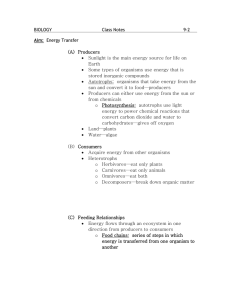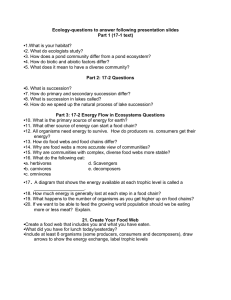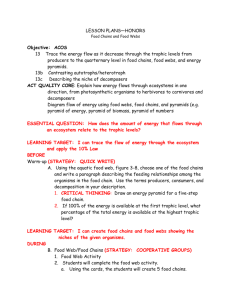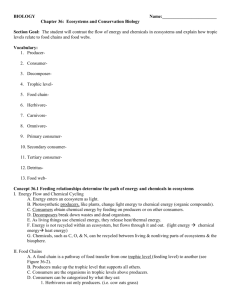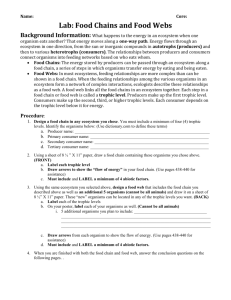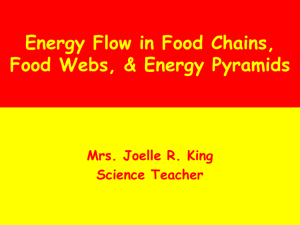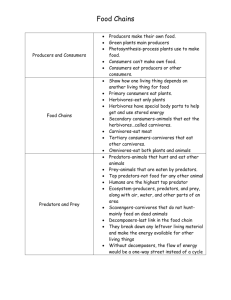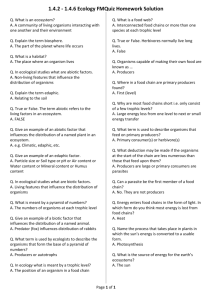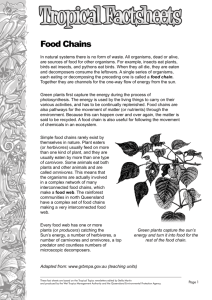Feeding relationships
advertisement
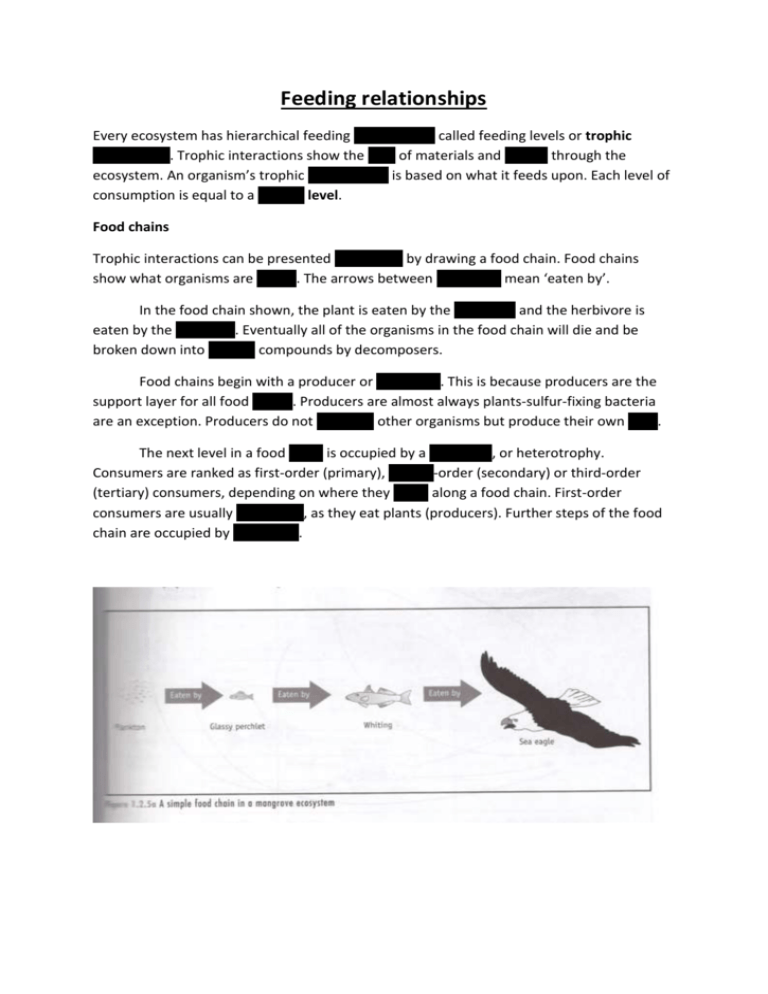
Feeding relationships Every ecosystem has hierarchical feeding relationships called feeding levels or trophic interactions. Trophic interactions show the flow of materials and energy through the ecosystem. An organism’s trophic classification is based on what it feeds upon. Each level of consumption is equal to a trophic level. Food chains Trophic interactions can be presented graphically by drawing a food chain. Food chains show what organisms are eating. The arrows between organisms mean ‘eaten by’. In the food chain shown, the plant is eaten by the herbivore and the herbivore is eaten by the carnivore. Eventually all of the organisms in the food chain will die and be broken down into simpler compounds by decomposers. Food chains begin with a producer or autotroph. This is because producers are the support layer for all food chains. Producers are almost always plants-sulfur-fixing bacteria are an exception. Producers do not consume other organisms but produce their own food. The next level in a food chain is occupied by a consumer, or heterotrophy. Consumers are ranked as first-order (primary), second-order (secondary) or third-order (tertiary) consumers, depending on where they occur along a food chain. First-order consumers are usually herbivores, as they eat plants (producers). Further steps of the food chain are occupied by carnivores. Food webs Within an ecosystem there are many feeding interactions that can be represented by food chains. Some of these food chains interact to form a food web. Food webs are more complex than food chains because they show that predators are not limited to one prey species and they indicate that some organisms are consumed by a variety of predators. In many cases a species may be a predator to one species and the prey to another. Food webs often include decomposers. This can make food webs look very complex, as all discarded organic matter and dead organism are broken down by bacteria and fungi. Collectively, all discarded decaying matter in the ecosystem is called detritus.
